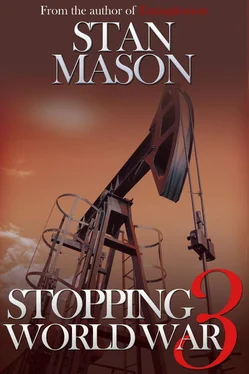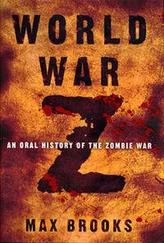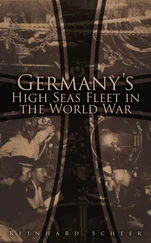The sky was heavy with rain the next morning as I drove to Stansted Airport. I found a thickset man waiting for me there as had been arranged. He stood alone in the entrance holding a placard which read ‘21’. I approached him and introduced myself.
‘My name’s Bross,’ he informed me. ‘I’m the pilot to take you to the Gaza Strip. The aircraft is ready for take-off.’
I followed him to the plane and boarded, ensuring that the door between the cockpit and the passenger compartment was normal and unlocked.
‘You have some kind of problem?’ he asked watching my actions. ‘Maybe you don’t like to sit with your back to the engine or something. Never mind. You can sit with me.’
His words comforted me and I consented to sit beside him in the front of the aircraft. He started the engine, contacted the control tower, and taxied off so that we were soon in the air. However it was technically an erratic take-off and I fostered the notion that he was extremely short of experience.
‘How long did it take to get your pilot’s licence?’ I asked questioning his ability.
‘Pilot’s licence!’ he replied as though it was unnecessary to obtain one. ‘We all learn from experience. My cousin used to take me up when he flew people to other destinations and I watched what he did. He used to show me what to do.’
The hairs began to stand up on the back of my head. ‘Well how did you learn to read all these instruments,’ I continued pointing to the numerous dials in front of him.
‘I don’t need to read instruments,’ he admitted freely. ‘Most of them hardly matter anyway. I just look at the speed and altitude.’
I sat in my seat expecting a bumpy ride but my fears for this part of the journey were unfounded as he switched on the automatic pilot to carry us across Europe. We continued our conversation, talking generalities for some time then I was overcome by sleep due to the early hour of rising and the monotonous drone of the engine. I awoke momentary on a few occasions but it was quite some time before I regained full consciousness. There was a violent jerk as the plane seemed to hit turbulence on a grand scale. At the same time a loud noise reverberated throughout the cockpit. As I sat up and yawned, I suddenly noticed that Bross was no longer in the pilot’s seat. I went to the passenger’s cabin to discover he was not there either. Before I returned to the cockpit, I looked out of the port window. There he was, some distance below, swaying forwards and backwards at the end of a parachute. The aircraft had reacted violently when he had opened the cabin door and jumped out. The loud noise was the door slamming back into place. I shook my head to make sure I wasn’t dreaming and then returned to the cockpit to stare at the controls. It was too late to try and work out who Bross was and why he had left me in this dilemma. I mean… what did I know about flying a plane? Nothing! I pressed a switch which I believed to be a microphone for transmitting messages and kept repeating: ‘May Day! May Day!’ but there was no reply. I didn’t even know whether I was transmitting properly . I opened a panel on the left-hand side of the pilot’s seat and found the operating manual. The aircraft possessed dual control yokes with vertical grips… one for each hand. Extended from the base of the instrument panel were two buttons… one to open the microphone for transmitting, the other to activate the positive control system… the automatic pilot. I pressed the communication button and continued to broadcast for assistance. In due course, a radio ham replied to say that he had received my message and had passed it on to the authorities. For a moment I was overwhelmed with relief but that hardly altered my situation. I was in deep trouble to say the least. Suddenly a voice sounded on the system and I picked up the microphone again.
‘This is Air Traffic Control at Ben Gurion Airport,’ came a stentorian voice. ‘What kind of aircraft are you and what’s your destination?’
‘I don’t know,’ I bleated trying to keep my voice on an even keel. ‘I’m just a passenger. The pilot’s baled out of the aircraft.
It’s a light aircraft but I can’t tell you any more than that. We left Stansted Airport and we’re headed for the Gaza Strip. I’ve never flown a plane before. All I can say is that we’ve been flying for well over three hours and there’s a lot of sea below but no land.’
‘You’re too low to show up on our radar screen,’ continued the voice, ‘but I can still talk you down. For Gaza, on your course from Stansted, you should be on a vector of three hundred and five degrees. There’s a gyro in front of you that should register the number.’
I searched the dials desperately until I found the right one. ‘The gyro reads three hundred and sixty,’ I told him. ‘At present we’re on automatic pilot.’
‘Okay,’ he commanded bluntly. ‘Remove the automatic pilot control and move the yoke slightly to your left. When you get the vector right you can reapply the automatic pilot.’
I obeyed his instruction and the plane lost altitude quickly, veering sharply. For a few seconds it was totally out of control but somehow I managed to compensate and sat back after switching on the automatic pilot control again. ‘Three hundred and five degrees!’ I confirmed with a sigh of relief. My hands were shaking and my knees felt as though they were made of rubber.
‘Good! Now there’s no point in continuing this dialogue until you reach land. When that happens, I want you to call me. Roger and out!’
I sat in the pilot’s seat without moving for what seemed to be a long time then I returned the manual to the locker. As I was about to close the locker door, I stared at a device which had been jammed in there. It had a clock dial on the front and it was ticking. Flashes of the wrecked plane in Crete returned to me with a vengeance and I recalled that the bomb which killed Chedda had also been placed in the cockpit. The dial was already close to zero which meant that the bomb was close to exploding or it wasn’t working at all. I took a mental bet with myself that it was likely to be the former. Pray… I thought to myself… pray! There was no means by which I would escape this time if the bomb exploded. There was no point in contacting the Air Traffic Control in Israel and I couldn’t remove the device for fear of setting it off.
It was a further eight minutes before land came into sight. My eyes were on the clock on the bomb practically all the time. On seeing land I decided to resume contact with Air Traffic Control and told them about the bomb knowing there was nothing either of us could do about it.
‘As soon as you cross to land we’ll get you down fast,’ the voice continued. ‘What you’re going to have to do is called a sideslip movement. You’ll need to turn the yoke to your left and simultaneously jam your foot against the right rudder pedal. The ailerons on the edges of the wings will respond immediately. The left aileron will be up; the right one will drop. The opposing forces created by the crossed control will cause the aircraft to turn sharply to its left side, putting the plane into distress and creating severe drag. It will drop precipitously in both air speed and altitude. You’ll find the plane will lurch to a precarious angle and you’ll experience a sensation of falling very fast. There’ll be a lot of shaking, bouncing and rattling but you’ve got to sideslip firmly. If you fall too fast, be careful your wingtips don’t touch the ground or you’ll crash. When you’re about forty feet from your chosen runway ease up on the controls and level off. Then brace yourself for impact. As there’s a suspected bomb on board, I suggest you get out of the plane as quickly as possible. In the meantime, I’ll keep this channel open.’
Читать дальше












